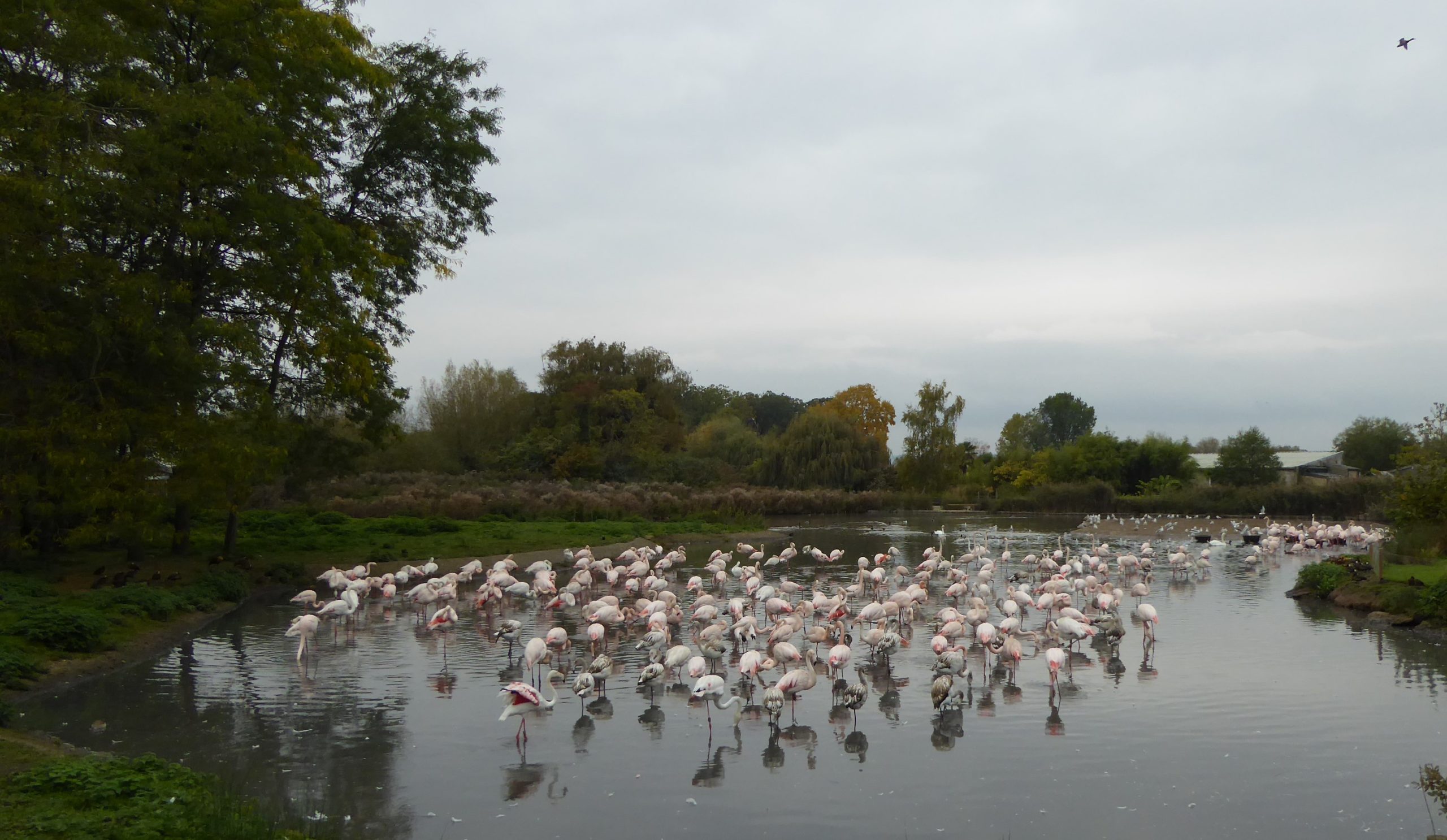Author: Dr. Paul Rose
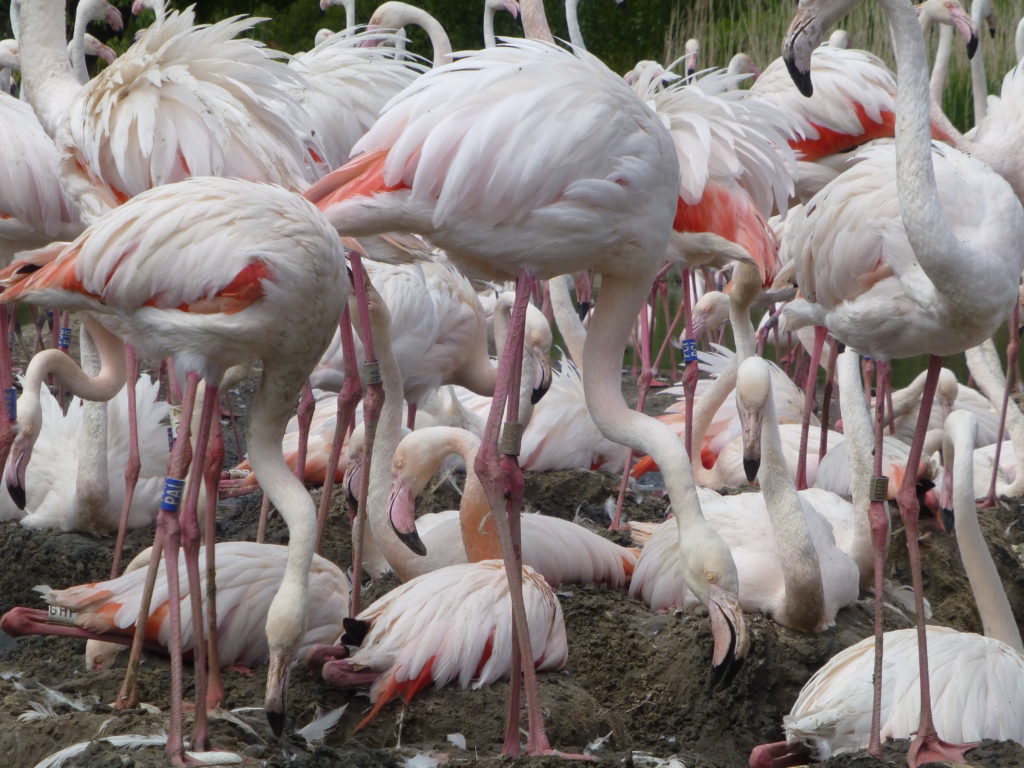
We know a lot about the behaviour of wild species during the daytime and behaviour studies on animals in human care are often used to help inform us of their welfare state. For lots of species housed in zoological collections, we know little about what they do once their keepers go home. To fully understand their behaviour patterns, and what goes on when we’re not watching, we can use technology to observe their behaviour patterns across a full 24 hour cycle.
It’s commonplace to use data from the wild to help explain what our animals are doing in captivity. For species that might be just as active during the night as well as during the day, our observations on a human time-frame might only be half of the story. As more research is published on the ecology of wild species, this can be used to inform how we keep species in zoological collections- and knowledge of the nocturnal habits of “diurnal” species is one such area of scientific investigation.
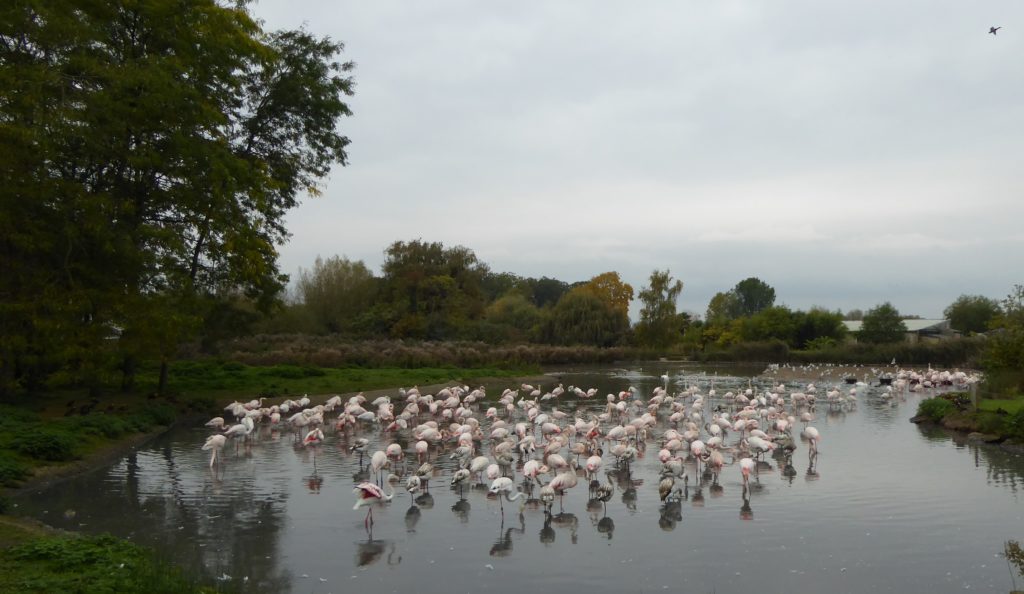
This research focused on flamingos, one of the world’s most popular of zoo animals occurring in a huge number of animal collections globally. Wild studies of flamingos have noted that feeding and foraging, chick rearing and movements between feeding and breeding areas can occur overnight. But how active are zoo birds? Will they still follow a similar activity budget to that shown in the field?
Using several remote trail cameras, fitted around the enclosure of a large flock of around 270 greater flamingos housed at WWT Slimbridge Wetland Centre behaviour across both day and night was collected over spring and summer 2016. The bird’s enclosure was split into different habitats areas, based on water depth in their pool and land areas used for different behaviour (such as nesting and rearing young) to see if areas commonly utilised during the daytime were still used overnight.
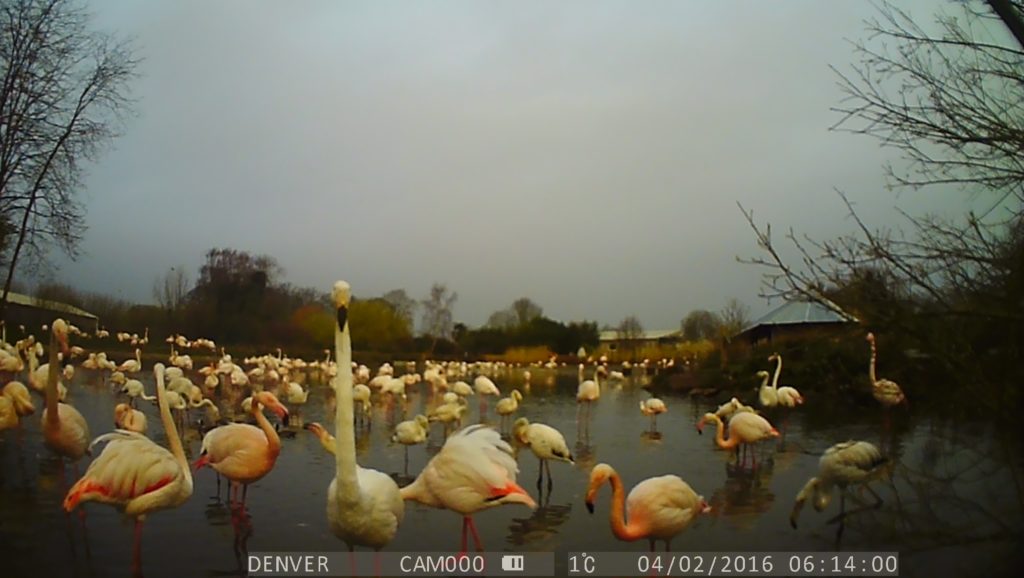
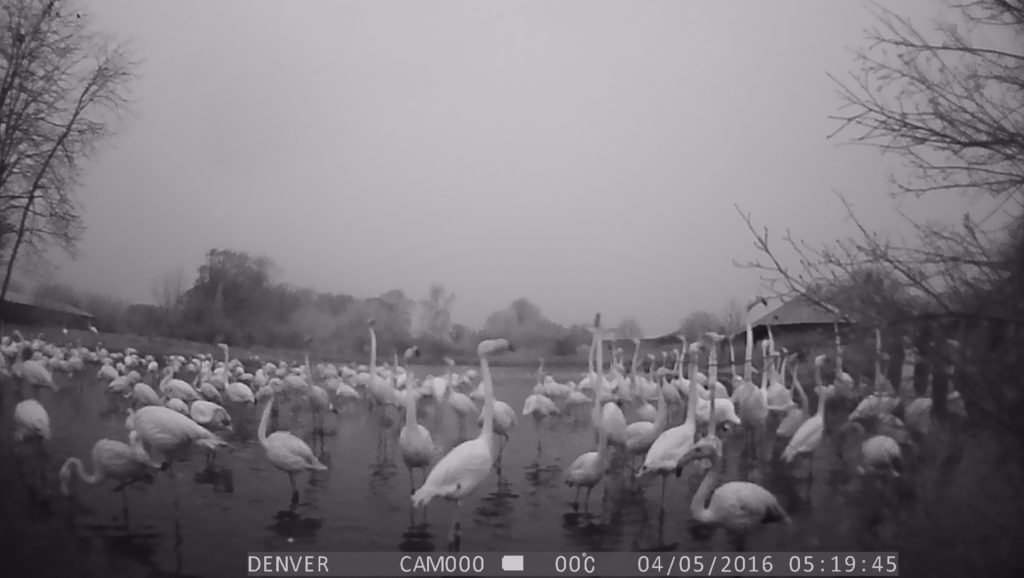
Remote cameras are great for capturing behaviour in the wild and in the zoo. They reduce the chance of a human observer affecting or influencing the behaviour of the animal being watched. And they can be set to record animals at specific times, to focus on what animals might be doing over different seasons or times of day. And they can help collect data to inform animal welfare standards by providing a picture of how animals use their space and what areas of their habitat they prefer to be in.
Results show that these flamingos use their enclosure differently at night to that seen in daytime. Foraging behaviours peaked in the evening, showing that even though the flamingos are provided with a complete diet, natural filtering in their pool is still an important behaviour for these birds to perform.
Widest enclosure use, with the largest number of birds using the maximum number of zones was seen during the later evening, middle of the night and into the early morning. Birds congregated in fewer areas of their habitat during the later morning and middle of the day- preferring to be in one specific place for resting and preening.
Some behaviours were more commonly performed during daylight- courtship display for example peaks in the morning, and is lowest overnight. Showing that for some behaviours with a high visual impact, time of day for its performance is important for the message being presented by the behaviour.
This research has important implications for how we manage zoo populations of flamingos and other species in animal collections. These nocturnal observations show us the times in a day when flamingos naturally spend their time on key behaviours. By providing a habitat that allows a range of activities to be performed at different times, and not restricting the birds space to use these areas means that in a zoological collection, a natural behaviour pattern is performed. This is important for the welfare of these birds as the good features of this enclosure (its large size, the range of habitat areas, and the large number of birds housed within it) can be replicated in other zoological institutions to provide the highest quality of life possible.
We also show the influence of season on overall flock nocturnal activity levels- with birds becoming more active as spring progresses into summer, dipping slightly during the nesting and incubation period and then rising as chicks fledge and leave the nest. These data are helpful for breeding programmes, monitoring the seasonal changes in animals as potential predictors of when reproductive behaviours may occur.
These data are also useful to those studying wild flamingos too, as if we know the times of the day that flamingos like to forage or rest, or where they prefer to gather in larger number, so we can help maintain or create such spaces within their wild habitats, away from disturbances to encourage birds to settle and breed, or to forage at times of the day most suitable for them. With four of the six species of flamingo having a level of conservation concern from the IUCN all information on their behavioural ecology can be useful to the conservation of future populations.
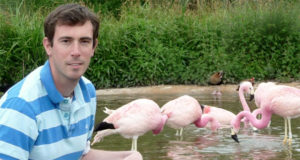
About the Author:
Dr. Paul Rose is a zoologist whose interests lie in behavioural ecology, ornithology and animal welfare. Paul has previously researched the relevance and importance of social networks in captive species, and the associated implications for zoo animal husbandry and welfare. He now researchers enclosure usage and breeding behaviour of captive flamingos to help further evidence base the husbandry techniques used for them.
“I would be interested to hear from anyone working in the zoo industries who is working with flamingos, or giraffes or wildfowl, as well as from those researchers who are also investigating similar questions / areas of zoo animal behaviour and husbandry across taxa. Please do get in touch if you’re interested in a collaboration.”
To find about more about Paul’s project click here
You can find Paul on:
#ExeterMarine is an interdisciplinary group of marine related researchers with capabilities across the scientific, medical, engineering, humanities and social science fields. If you are interested in working with our researchers or students, contact Michael Hanley or visit our website!

